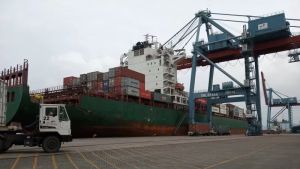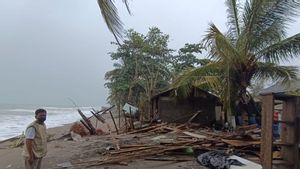JAKARTA - Ship attacks pose a serious threat to whales, potentially leading to the extinction of a critically endangered subspecies.
The approximately 1.3 million whales remaining in our oceans face increased shipping traffic as they surface, as well as travel to their feeding or breeding grounds.
Global maritime traffic quadrupled between 1992 and 2012. In some corners of the world, such as the Arctic, it actually doubled between 2013 and 2018. Meanwhile, whale numbers are on the decline.
Since commercial whaling was banned in 1986, the greatest measurable threat to whales is being swept away as bycatch. An estimated 300,000 a year drown after becoming entangled in fishing gear.
However, there could be a bigger threat. Ship attacks, where ships collide with sea creatures, are not so easy to measure but can be just as deadly. The sad sight of a whale's body clinging to the front of a ship entering port represents only a fraction of the accidents.
"It's very difficult to know how many are actually affected by some of these threats if their bodies sink and are never found in the ocean," said Sue Fisher, director of policy at the North American Whale and Dolphin Conservation Institute, citing Euronews Jan. 16.

However, collisions with large ships often go unnoticed and go unreported.
"Many whales were found washed up on shore with impact injuries consistent with being hit by a ship," he said.
For some populations, such as the endangered North Atlantic right whale whose primary habitat is the busy waters off the east coast of the United States and Canada, the problem is even bigger.
Deaths from ship attacks could make the difference between extinction and survival, the International Whaling Commission states on its website.
Whales can make a huge difference in tackling climate change. In addition, whales play an important role in supporting healthy marine ecosystems and tackling climate change. They provide nutrients to the phytoplankton that absorb 40 percent of all CO2 produced on the planet.
The giant marine mammals also absorb about 33 tons of CO2 which is 1,500 times what trees absorb in a year.
The threat of large ships lurking can be tackled by governments, operators and even consumers, says the World Sustainability Organization (WSO).
The NGO has launched a new project called 'Save the Whales' following the 'Friend of the Sea' certification programme. Operators who join the program and meet a range of requirements, including extensive whale watching and data exchange, can earn 'Whale-Safe' certification.

"Although the Whale-Safe project was launched only recently, two major carriers, Seatrade and GreenSea, are already certified for Sustainable Shipping," explains World Sustainable Organization founder Dr Paolo Bray.
The NGO is also advocating for moving some shipping lanes that cross important feeding or breeding areas. According to the report, high-risk zones include the southern coast of Sri Lanka, the Hauraki Bay in New Zealand, the Canary Islands and the Mediterranean Sea.
Meanwhile, the World Shipping Council Trade Association had no comment, but stated in its response that it was working on the matter. It is said to work closely with two environmental organizations; International Fund for Animal Welfare and Great Whale Conservation.
In addition, trade associations as well as WSO, are also working with Sri Lankan authorities to move shipping lanes on the south coast. Fatal crashes have nearly doubled in the past 40 years causing the local blue whale population to fall by more than 50 percent.
The English, Chinese, Japanese, Arabic, and French versions are automatically generated by the AI. So there may still be inaccuracies in translating, please always see Indonesian as our main language. (system supported by DigitalSiber.id)









